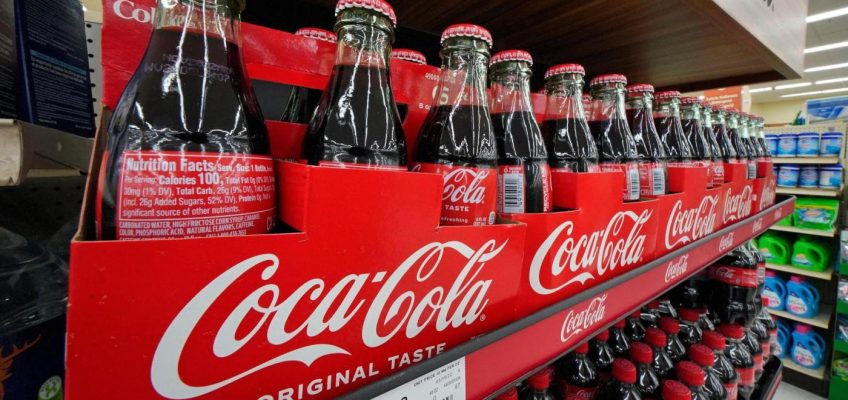By CATHY BUSSEWITZ, Associated Press
NEW YORK (AP) — The U.S. Department of Labor is aiming to rewrite or repeal more than 60 “obsolete” workplace regulations, ranging from minimum wage requirements for home health care workers and people with disabilities to standards governing exposure to harmful substances.
If approved, the wide-ranging changes unveiled this month also would affect working conditions at constructions sites and in mines, and limit the government’s ability to penalize employers if workers are injured or killed while engaging in inherently risky activities such as movie stunts or animal training.
The Labor Department says the goal is to reduce costly, burdensome rules imposed under previous administrations, and to deliver on President Donald Trump’s commitment to restore American prosperity through deregulation.
“The Department of Labor is proud to lead the way by eliminating unnecessary regulations that stifle growth and limit opportunity,” Secretary of Labor Lori Chavez-DeRemer said in a statement, which boasted the “most ambitious proposal to slash red tape of any department across the federal government.”
FILE – Labor Secretary Lori Chavez-DeRemer listens as President Donald Trump speaks with reporters while signing executive orders in the Oval Office of the White House, April 23, 2025, in Washington. (AP Photo/Alex Brandon, File)
Critics say the proposals would put workers at greater risk of harm, with women and members of minority groups bearing a disproportionate impact.
“People are at very great risk of dying on the job already,” Rebecca Reindel, the AFL-CIO union’s occupational safety and health director, said. “This is something that is only going to make the problem worse.”
The proposed changes have several stages to get through before they can take effect, including a public comment period for each one.
Here’s a look at some of the rollbacks under consideration:
No minimum wage for home health care workers
Home health care workers help elderly or medically fragile people by preparing meals, administering medications, assisting with toilet use, accompanying clients to doctor appointments and performing other tasks. Under one of the Labor Department’s proposals, an estimated 3.7 million workers employed by home care agencies could be paid below the federal minimum wage — currently $7.25 per hour — and made ineligible for overtime pay if they aren’t covered by corresponding state laws.
The proposed rule would reverse changes made in 2013 under former President Barack Obama and revert to a regulatory framework from 1975. The Labor Department says that by lowering labor and compliance costs, its revisions might expand the home care market and help keep frail individuals in their homes for longer.
FILE – Caregiver Warren Manchess helping Paul Gregoline with his shoes and socks, in Noblesville, Ind., Nov. 27, 2013. (AP Photo/Darron Cummings, File)
Judy Conti, director of government affairs at the National Employment Law Project, said her organization plans to work hard to defeat the proposal. Home health workers are subject to injuries from lifting clients, and “before those (2013) regulations, it was very common for home care workers to work 50, 60 and maybe even more hours a week, without getting any overtime pay,” Conti said.
Others endorse the proposal, including the Independent Women’s Forum, a conservative nonprofit based in Virginia. Women often bear the brunt of family caregiving responsibilities, so making home care more affordable would help women balance work and personal responsibilities, the group’s president, Carrie Lukas, said.
“We’re pleased to see the Trump administration moving forward on rolling back some of what we saw as counterproductive micromanaging of relationships that were making it hard for people to get the care they need,” Lukas said.
Samantha Sanders, director of government affairs and advocacy at the nonprofit Economic Policy Institute, said the repeal would not constitute a win for women.
“Saying we actually don’t think they need those protections would be pretty devastating to a workforce that performs really essential work and is very heavily dominated by women, and women of color in particular,” Sanders said.
Protections for migrant farm workers
Last year, the Labor Department finalized rules that provided protections to migrant farmworkers who held H-2A visas. The current administration says most of those rules placed unnecessary and costly requirements on employers.
Under the new proposal, the Labor Department would rescind a requirement for most employer-provided transportation to have seat belts for those agriculture workers.
The department is also proposing to reverse a 2024 rule that protected migrant farmworkers from retaliation for activities such as filing a complaint, testifying or participating in an investigation, hearing or proceeding.
“There’s a long history of retaliation against workers who speak up against abuses in farm work. And with H-2A it’s even worse because the employer can just not renew your visa,” said Lori Johnson, senior attorney at Farmworker Justice.
Michael Marsh, president and CEO of the National Council of Agricultural Employers, applauded the deregulation efforts, saying farmers were hit with thousands of pages of regulations pertaining to migrant farmworkers in recent years.
“Can you imagine a farmer and his or her spouse trying to navigate 3,000 new pages of regulation in 18 months and then be liable for every one of them?” he asked.
Adequate lighting for construction spaces
The Occupational Safety and Health Administration, part of the Labor Department, wants to rescind a requirement for employers to provide adequate lighting at construction sites, saying the regulation doesn’t substantially reduce a significant risk.
FILE – Construction workers frame up a roof of wood lumber at a new home build, April 1, 2025, in Laveen, Ariz. (AP Photo/Ross D. Franklin, File)
OSHA said if employers fail to correct lighting deficiencies at construction worksites, the agency can issue citations under its “general duty clause.” The clause requires employers to provide a place of employment free from recognized hazards which are likely to cause death or serious physical harm.
Worker advocates think getting rid of a specific construction site requirement is a bad idea. “There have been many fatalities where workers fall through a hole in the floor, where there’s not adequate lighting,” Reindel said. “It’s a very obvious thing that employers should address, but unfortunately it’s one of those things where we need a standard, and it’s violated all the time.”
Mine safety
Several proposals could impact safety procedures for mines. For example, employers have to submit plans for ventilation and preventing roof collapses in coal mines for review by the Labor Department’s Mine Safety and Health Administration. Currently, MSHA district managers can require mine operators to take additional steps to improve those plans.
FILE – A miner gathers his thought before taking part in a rescue mission, Jan. 3, 2006, in Tallmansville, W.Va.. (AP Photo/Haraz N. Ghanbari, Pool, File)
The Labor Department wants to end that authority, saying the current regulations give the district manager the ability to draft and create laws without soliciting comments or action by Congress.
Similarly, the department is proposing to strip district managers of their ability to require changes to mine health and safety training programs.
Limiting OSHA’s reach
The general duty clause allows OSHA to punish employers for unsafe working conditions when there’s no specific standard in place to cover a situation.
The government was once a steady partner for nonprofits. That’s changing
Trump and Philippine leader plan to talk tariffs and China at the White House
US says it’s leaving UN cultural agency UNESCO again, only 2 years after rejoining
Banishing a reporter: Trump escalates battle with Wall Street Journal over Epstein story
Budget office says Trump’s tax law will add $3.4 trillion to deficits, leave 10 million uninsured
An OSHA proposal would exclude the agency from applying the clause to prohibit, restrict or penalize employers for “inherently risky professional activities that are intrinsic to professional, athletic, or entertainment occupations.”
A preliminary analysis identified athletes, actors, dancers, musicians, other entertainers and journalists as among the types of workers the limitation would apply to.
“It is simply not plausible to assert that Congress, when passing the Occupational Safety and Health Act, silently intended to authorize the Department of Labor to eliminate familiar sports and entertainment practices, such as punt returns in the NFL, speeding in NASCAR, or the whale show at SeaWorld,” the proposed rule reads.
Debbie Berkowitz, who served as OSHA chief of staff during the Obama administration, said she thinks limiting the agency’s enforcement authority would be a mistake.
“Once you start taking that threat away, you could return to where they’ll throw safety to the wind, because there are other production pressures they have,” Berkowitz said.




